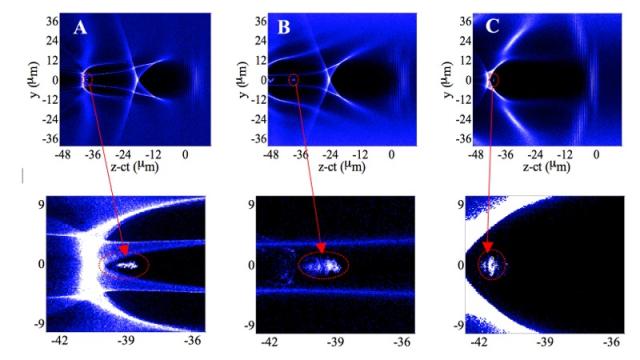A new generation of tabletop accelerators has the potential to accelerate electrons to near the speed of light, without the need for gigantic machines like the Large Hadron Collider. But that all-important energy beam is too spread out for optimal performance. An international team of physicists has figured out a way to address this shortcoming and described their method in a new paper in Physics of Plasmas.
Plasma wakefield accelerators are tabletop machines that are capable of accelerating electrons to very high energies over a few centimetres, compared to 3km for full-sized particle accelerators today. By firing intense, short pulses of laser light into a plasma (cloud of ionised gas), scientists can create a wave rippling through the plasma that leaves a bunch of charged particles in its wake, just like a speed boat racing across a lake churns up a wake of water in its path. Add a second laser pushing even more electrons into the plasma, and they can “surf” that wake, picking up more speed by drawing off the energy from the wakefield.
There’s just one problem: not all electrons are accelerated equally, because electrons catch the plasma wave at different times. The first ones have more time for acceleration, and they end up moving faster than the latecomers. The also don’t all catch the wave at the same place; some locations get bigger energy boosts than others. This matters because most applications for this technology require tightly focused (coherent) beams — such as building a tabletop free-electron laser for materials processing and manufacturing.
A team of Chinese, American and South Korean physicists have proposed a way to make that acceleration more uniform by inserting a “plasma compressor”. This will squeeze the electrons together to limit their spread and form a shorter pulse in the beam. And for good measure, it will switch their order, so that the latecomer electrons jump to the front, giving them a chance to catch up to the early birds in terms of acceleration.
This should result in a tenfold improvement in beam quality for plasma wakefield accelerators. The next step: building a prototype device in the lab to experimentally confirm their proposed method.
Image: Jiansheng Liu/Chinese Academy of Sciences
